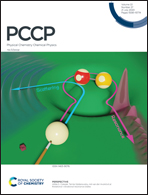A contrastive study on the properties of plasmon-induced electrons generated from prism- and column-shaped nanoparticles
Abstract
Plasmonic metal nanoparticles with anisotropic shapes have different sizes in different directions but the influence of this property on plasmon-induced electrons and their transport performance are rarely studied in particular, a contrastive study among different shapes is lacking. Herein, we utilize a theoretical free-electron model to investigate two representative nanoparticle shapes, namely nanorod and nanocuboid, exploring the effect of nanoparticle geometry on induced electron generation and injection with a basic quantum interpretation. The results show that the electrons excited in the two shapes of nanoparticles get differently affected on changing the geometry. Specifically, the nanorod is more likely to generate higher amounts of electrons than the nanocuboid because of the greater number of initial energy states and stronger peak of field enhancement of the former due to a particular aspect ratio, while the nanocuboid invariably has a better efficiency of electron injection due to its larger energy component perpendicular to the interface. Increasing the volumes of both the nanoparticles within our calculation model only contributes to the higher generation and injection rate due to more quantum states. Besides, different incident lights affect electron generation mainly by causing different polarized field enhancement. Our results and derivations herein can provide suggestions to select and design the geometric dimensions of similar nanoparticles.



 Please wait while we load your content...
Please wait while we load your content...